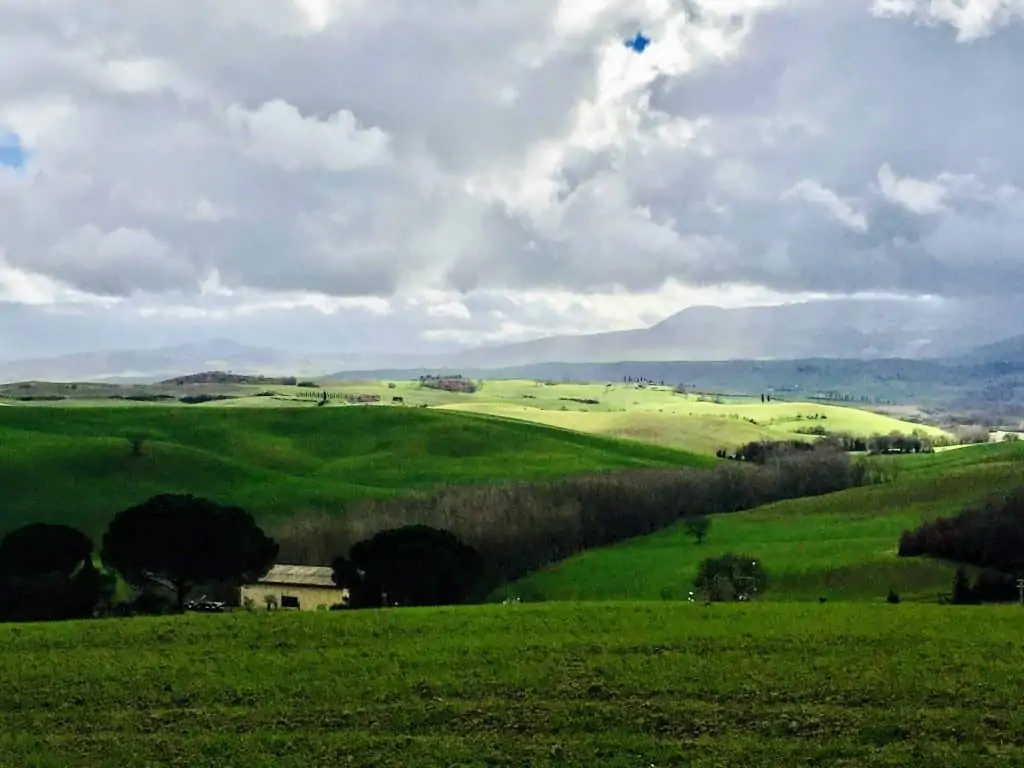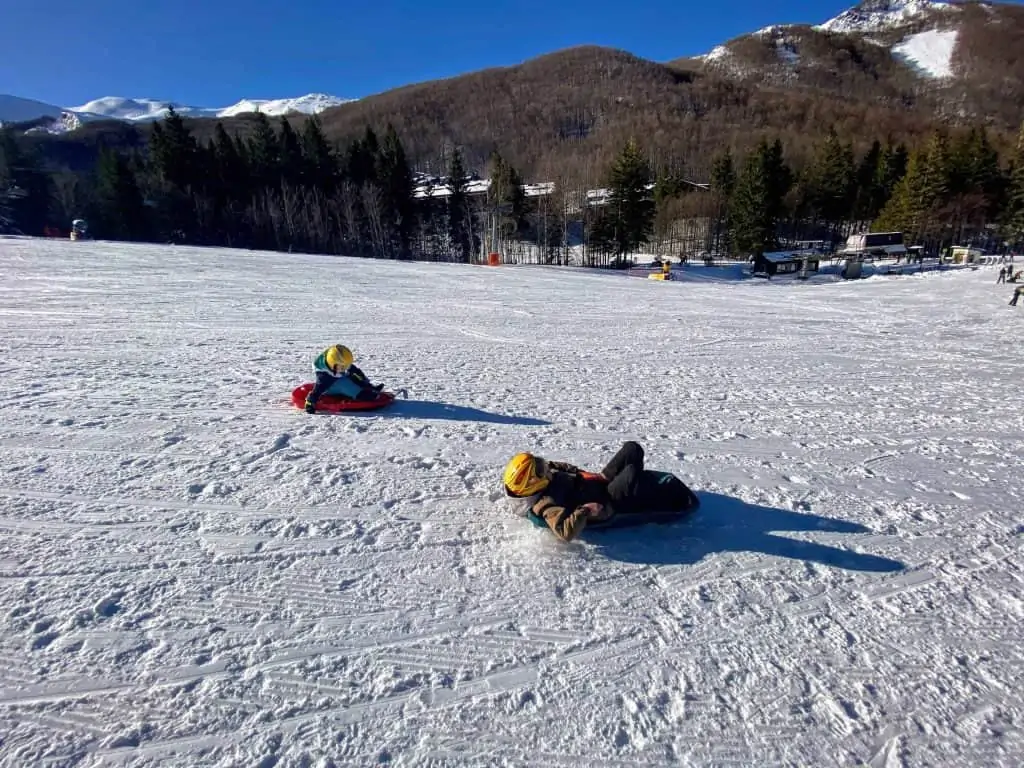You may already know some facts about Tuscany, like that it’s the birthplace of many famous artists, or that its grapes make some of the best wine in the world.
You can quickly look up Tuscan facts like how large the region is or what the population is, so I won’t include those facts about Tuscany in this article.
Instead, read on for:
- Interesting facts about Tuscan people and the Italian language in Tuscany
- Fun facts about Tuscan food and wine
- Curious facts about culture, art, architecture in Tuscany
- Facts about Tuscany’s industry and geography
I hope by the time you finish this article you’ll have a better understanding of Tuscany and that you’ll have a chance to see/experience/explore some of these facts about Tuscany in person!
Table of Contents
Tuscany Facts About People
1. Tuscany has its fair share of famous people that hail from its land:
| Name | Occupation | Birth Place In Tuscany |
|---|---|---|
| Dante Alighieri | poet | Florence |
| Donatello | sculptor | Florence |
| Leonardo da Vinci | artist/inventor | Vinci |
| Amerigo Vespucci | explorer | Florence |
| Niccolò Machiavelli | philosopher/politician | Florence |
| Galileo Galilei | astronomer | Pisa |
| Giacomo Puccini | composer | Lucca |
| Roberto Cavalli | fashion designer | Florence |
| Carlo Collodi (Lorenzini) | author | Collodi |
| Michelangelo Buonarotti | artist | Caprese Michelangelo |
| Sandro Botticelli | artist | Florence |
| Fibonacci | mathematician | Pisa |

2. People from Tuscany define themselves as being Tuscan before being Italian.
3. Tuscany has one of the largest Chinese communities in Europe, in Prato.

Facts About Language In Tuscany
4. The name Tuscany comes from the Etruscans, a (pre- Roman empire) tribe that settled in the area around 1000BCE. Tuscany is the name of the region in English.
In Italian, the region is called Toscana (tohs-KAH-nah):
5. The Italian language is based on the Florentine dialect. During the Renaissance, people wrote official documents and literature using Latin. Italian people spoke Italian – but there were many dialects. The Florentine poet Dante Alighieri wrote his Divine Comedy in the Florentine dialect and it became the standard spoken Italian (and still is today).

6. Throughout Italy, children call their fathers ‘papà‘. In Tuscany, most children call their fathers ‘babbo.’
Tuscan Food And Wine Facts
7. Tuscany is famous globally for many of its wines, including Chianti Classico, Super Tuscans (Sassicaia, Le Pergole Torte, Ornellaia, Tignanello), Vino Nobile di Montepulciano, Morellino di Scansano and Brunello di Montalcino.
Vin Santo (literally ‘saint’s wine’), a sweet dessert wine, is also from Tuscany.

8. Montalcino was known for its olive oil until the tremendous frost of 1985 destroyed more than 80% of the olive trees in the area. Instead of replanting new olive trees, the local farmers planted vines, which eventually grew the grapes of the now world-famous Brunello di Montalcino.
9. Tuscan bread (pane toscano) is made without salt. There are a few theories about why. One theory is that salt was once highly taxed, so Tuscans decided to bake their bread without salt and kept doing so even after salt became affordable.
It’s sometimes called pane sciocco – which translates to saltless bread or foolish bread. You decide which translation fits best.
10. Tuscan specialties include insides of animals– lampredotto (cow’s stomach cooked with onions, tomatoes, celery and parsley, and served on a roll) and trippa alla fiorentina (tripe filled with veggies, topped with tomato sauce and parmigiano).
11. Some say that gelato was invented by Bernardo Buontalenti in Florence in the 16th century. You can still taste Buontalenti’s recipe at Gelateria Badiani in Florence.
Read where to get the
Best Gelato in Florence
Best Gelato in Tuscany
12. Tuscan cuisine is based on the land and recycling. Some of its most famous dishes reuse leftover ingredients – ribollita (literally ‘reboiled’ vegetable and bread soup), pappa al pomodoro (tomato and bread soup) and panzanella (bread and vegetable salad).
13. Other famous Tuscan dishes include bistecca alla fiorentina (thick steak), cantucci (biscotti with roasted almonds), schiacciata all’uva (focaccia-like bread with sweet grapes), crostini (toasted bread with liver pate), and coccoli (fried dough balls, sometimes with cheese or other fillings).

Facts About Tuscan Culture And Art
14. Tuscany is home to 8 UNESCO World Heritage sites:
- Florence historic center (1982)
- Pisa’s Piazza del Duomo (1987)
- San Gimignano historic center (1990)
- Siena historic center (1995)
- Pienza historic center (1996)
- Val d’Orcia (2004)
- Medici villas and gardens, in Florence, Vaglia, Fiesole, Prato, Cerreto Guidi, Quarrata, Carmignano, Barberino in Mugello, and Lucca (2013)
- The Great Spa Towns of Europe, including Tuscany’s Montecatini Terme (2021)

15. Florence was the birthplace of the Renaissance, the ‘rebirth’ of culture, art, economics, and politics in Europe following the Middle Ages.
16. Tuscany was the first state in the world to abolish the death penalty on November, 30, 1786. Tuscany celebrates the Festa della Toscana (or Tuscany Festival) every year on November 30th.
17. You can see Tuscany in major films, including:
- The Gladiator (Val d’Orcia)
- Life is Beautiful (Arezzo)
- Under The Tuscan Sun (mostly Cortona)
- Hannibal (Florence)
- Quantum of Solace (Siena, Talamone, Carrara)
- Twilight – New Moon (Montepulciano)
- Letters to Juliet (Siena & its countryside, Montalcino countryside)
- The English Patient (Pienza & countryside, Viareggio, near Lucca)
- A Room With A View (Florence)
18. The original sword in the stone is in Tuscany’s San Galgano Abbey.
19. Pinocchio is from Tuscany. Carlo Lorenzini (pseudonym Carlo Collodi) created the story of the puppet Pinocchio. My 7-year old is reading the book in class right now, along with most other second graders throughout Tuscany. Visitors to Collodi (Lorenzini’s hometown) can explore the Pinocchio Park.

20. Carrara’s world-famous marble quarries have supplied artists for centuries. Michelangelo sourced marble from the Tuscan coast’s quarries for his David statue and other sculptures.

21. Stendhal Syndrome (aka Florence syndrome) is a condition that may include fainting, hallucinations, rapid heartbeat, or delirium. It originated in Florence’s Santa Croce church when the French author (Stendhal) became overwhelmed with emotion. It’s said that Florence hospitals occasionally treat tourists with the condition.
Tuscan Architecture Facts
22. Pienza, in Southern Tuscany, was designed by Pope Pius II as a utopian city. While the area’s pecorino (sheep’s milk) cheese steals the show nowadays, you can wander through the small town and explore the Pope’s planned ideal city.

23. Tuscany is home to a medieval Manhattan – San Gimignano. 14 of the original 72(!) towers (bell towers, house towers, and watch towers) remain and you can even climb a few of them!
24. There are THREE leaning towers in Pisa. San Nicola bell tower (by the same architect of the famous Leaning Tower of Pisa) leans and so does the bell tower of San Michele degli Scalzi. It’s shorter than its famous friend in the center of Pisa, but it leans at a steeper angle. Read our Fun Facts about the Leaning Tower of Pisa.
25. Tuscany has some of Italy’s best-preserved castles and walled cities. We love Brolio castle (Castello di Brolio) and the walled towns of Monteriggioni and Lucca.

Tuscany Industry Facts
26. Vespas are from Pontedera in Tuscany and the Piaggio (manufacturer of Vespa scooters) Museum is located in the town.
27. Tuscany produces about 1/3 of Italy’s leather, which is used for clothing, shoes, and accessories. The biggest area of production is in Santa Croce dell’Arno, between Florence and Pisa. Florence is known for high-quality leather and its leather goods make excellent souvenirs.

Facts About Tuscany Geography
28. Tuscany is about the same size as Israel or New Jersey, but with much less people!
| Place | Area | Population Density |
|---|---|---|
| Tuscany | 23,000 km2 (8880 mi2) | 160/km2 (414/mi2) |
| Israel | 22,145 km2 (8550 mi2) | 400/km2 (1035/mi2) |
| New Jersey | 22,592 km2 (8723 mi2) | 467/km2 (1210/mi2) |
29. Tuscany is almost all hills and mountains. An estimated 65% of Tuscany is comprised of hills, while another 25% is mountainous. If you’re coming to Tuscany to ride your bicycle, you’ll spend most of your time pedaling up or down hills!

30. Tuscany has 7 islands – Elba, Giglio, Capraia, Montecristo, Pianosa, Giannutri and Gorgona (in order of size, from biggest to smallest). There’s a legend behind the origin of these islands – the Goddess Aphrodite lost seven beads from her necklace in the waters off the Tuscan coast and they became the 7 islands of the Tuscan archipelago.

31. Tuscany was once the capital of Italy. When Italy became a country in 1861, Turin (in Piedmont) was named as the capital. In 1865, Florence was named the new capital of Italy. Only six year later, in 1871, the capital was moved to its current home in Rome.
32. Tuscany is the 5th largest region by land area, behind Sicily, Piedmont, Sardinia, and Lombardy. It’s the 9th largest region by population, behind Lombardy, Lazio, Campania, Veneto, Sicily, Emilia-Romagna, Piedmont, and Puglia.
33. Tuscany shares borders with five other Italian regions (Liguria to the northwest, Emilia Romagna to the northeast, Le Marche to the east, Umbria to the east, Lazio to the south) and the Tyrrhenian Sea to the west:

34. Along with the thermal baths at the UNESCO site of Montecatini Terme, Tuscany is also home to many other incredible hot springs and thermal baths, including: Saturnia, Bagno Vignoni, Chianciano Terme and San Casciano dei Bagni.
35. You can ski in Tuscany and less than two hours later, have your toes in the sand at the beach! Options for skiing in Tuscany include Abetone (about 2 hours from the beach) and Monte Amiata (about 1.5 hours from the beach).

I hope this article has helped you pick up a few new facts about Tuscany!



